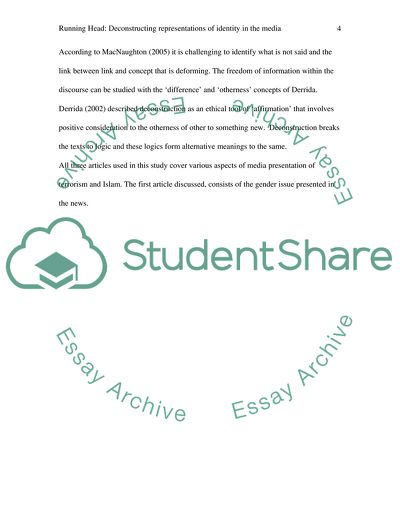Cite this document
(Deconstructing Representations of Identity in the Media Term Paper, n.d.)
Deconstructing Representations of Identity in the Media Term Paper. https://studentshare.org/media/1741821-bacholer-of-educationbirth-5-diversity-and-difference-deconstructing-representations-of-identity-in-the-media
Deconstructing Representations of Identity in the Media Term Paper. https://studentshare.org/media/1741821-bacholer-of-educationbirth-5-diversity-and-difference-deconstructing-representations-of-identity-in-the-media
(Deconstructing Representations of Identity in the Media Term Paper)
Deconstructing Representations of Identity in the Media Term Paper. https://studentshare.org/media/1741821-bacholer-of-educationbirth-5-diversity-and-difference-deconstructing-representations-of-identity-in-the-media.
Deconstructing Representations of Identity in the Media Term Paper. https://studentshare.org/media/1741821-bacholer-of-educationbirth-5-diversity-and-difference-deconstructing-representations-of-identity-in-the-media.
“Deconstructing Representations of Identity in the Media Term Paper”. https://studentshare.org/media/1741821-bacholer-of-educationbirth-5-diversity-and-difference-deconstructing-representations-of-identity-in-the-media.


